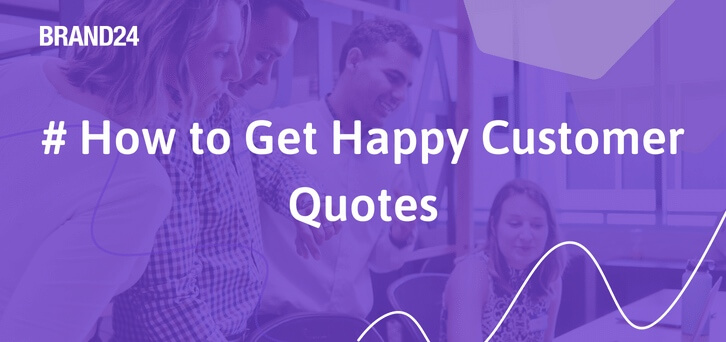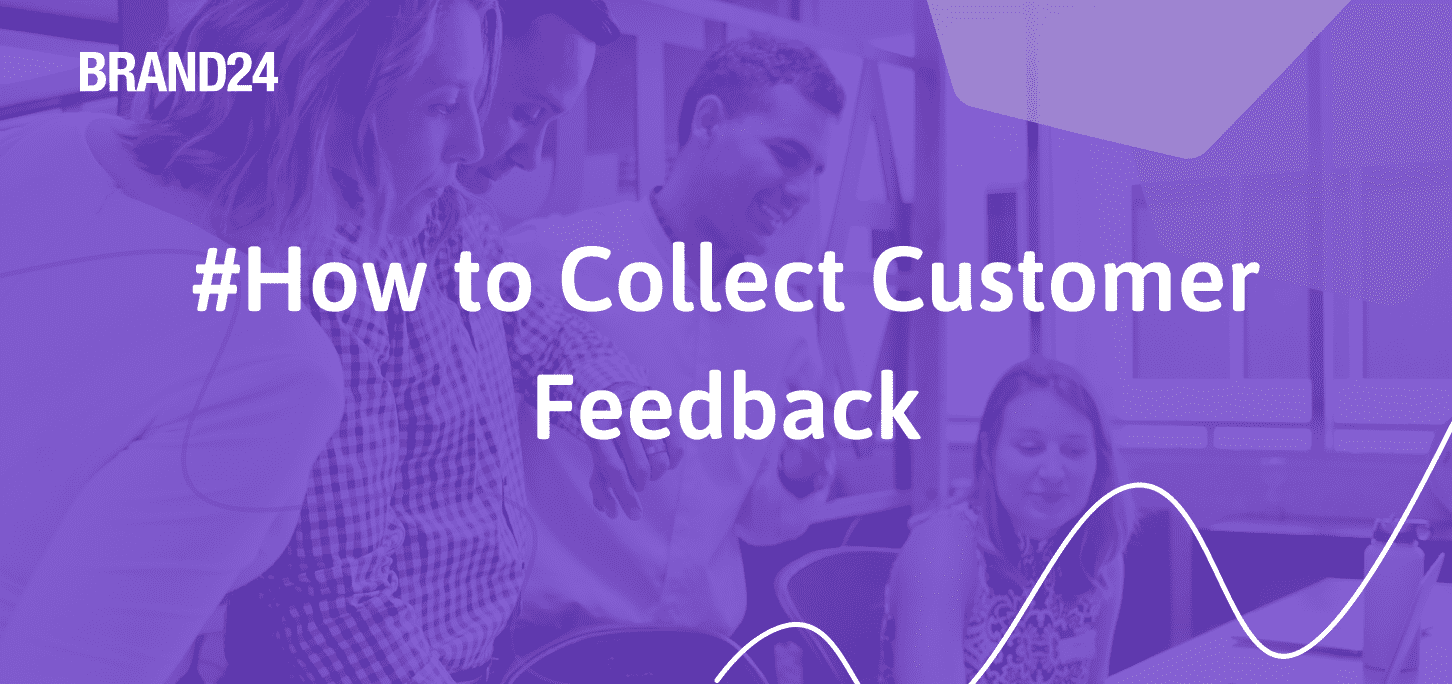What is a Buyer Persona and How to Create One?
Table of contents
Buyer personas can help you a lot in your marketing efforts, but it’s vital to know what to include in your research. If you want to learn how to create a buyer persona, you are in the right place!
Yes, it takes time to develop multiple personas that would reflect your customers’ preferences. But trust me – it’s definitely worth it. Well-researched buyer personas will save you a lot of time and hassle in your future marketing efforts.
Today, I will teach you everything you need to know about creating a sample target customer and how to interpret their purchasing decisions to your benefit.
We will start with theory and then go on to a step-by-step guide on creating a buyer persona along with some buyer persona templates.
Skip to the bottom of the article to learn how to use Brand24 to make a buyer persona.
Brand24 is a tool that monitors online mentions about your company.
Table of contents:
- What is a buyer persona – definition
- What are the benefits of creating buyer personas?
- How can buyer personas be used in marketing?
- Different types of buyer personas
- How many buyer personas should you have?
- How to create a buyer persona in 5 easy steps
- How to use Brand24 for buyer personas research?
- Creating a buyer persona – templates & tools
- B2B vs B2C buyer personas
- FAQ
What is a buyer persona – definition
A buyer persona is a fictional representation of your ideal customer based on research and data about your target market.
It is a detailed description of a specific type of client that includes information such as:
- demographics and personal background,
- behavior patterns,
- goals,
- challenges and pain points,
- preferences,
- and motivations.
Some common information that might be included in a buyer persona demographics include age, gender, education level, job title, income, hobbies, interests, marital status, family status, preferred communication channels, and purchasing habits.
The more detailed and accurate the buyer persona is, the better your organization can understand the ideal customer and make data-driven decisions about how to market and sell to them.
In need of data about your target audience? Create informed buyer personas with Brand24 data!
What are the benefits of creating buyer personas?
Buyer personas are important because they help businesses better understand their target audience and develop a more accurate marketing strategy.
With a well-researched buyer persona, you can figure out your potential customers. Namely, what they need, the pain points, and how they would like the product or service to work and be developed.
Knowing your customer personas, you can tailor your marketing messages more accurately to reach this type of people. After all, the buyer persona should be an individual most likely to make a purchase.
Another great benefit of creating a buyer persona is that you can easily increase customer loyalty when you know your target audience. You can do so by addressing the needs of your existing customers. This way, you will show them that your organization understands and cares about its clients. You can build stronger relationships with your customers and even encourage them to become brand advocates, all while following the buyer persona template.
Finally, when you plan the product development, you can use buyer personas to determine which way to go so your customers will be satisfied and stay in your sales cycle.
To sum up, there are 5 main reasons why you should create a buyer persona:
- Understanding your target audience,
- Developing effective marketing strategies,
- Increasing customer loyalty with a deeper understanding of their needs and pain points,
- Informing your product development to fit the needs of your existing and potential customers
- Finally, driving more sales thanks to tailored marketing messaging.
Learn about your target audience with Brand24 and create your own buyer persona templates.
Marketing persona: How can buyer personas be used in marketing?
Now that you understand why buyer personas are important, let’s focus on how to use them to attract ideal customers. There are at least 5 great ways of including buyer persona examples in your marketing campaigns.
Read further to learn how buyer persona helps you in targeted marketing campaigns and persona-based decision-making process.
01 Tailored messaging
The buyer persona profile should include the main characteristics of the target customers. That means, if you do your research phase right, you will be able to speak their language. You will understand all the problems they face and how exactly your product or service can help.
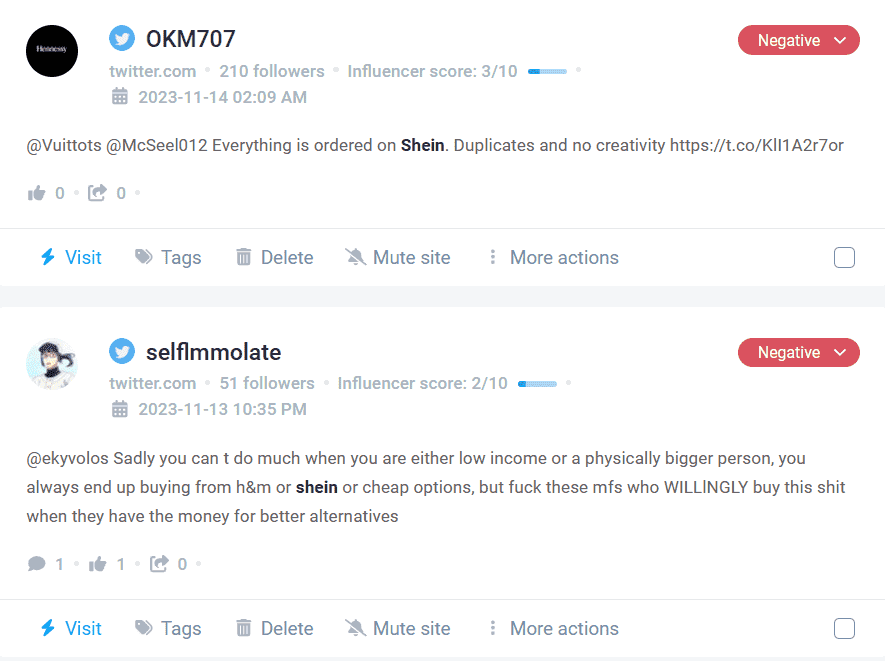
For example, if your buyer persona is a working mom, you can focus on your product’s time-saving features in the marketing strategy. Or, if you target small businesses with your SaaS, think of marketing automation features that will allow them to focus their efforts elsewhere.
02 Developing marketing content
When you know your customers, your marketing and sales teams can work on the content that will most likely resonate with the focus group.
Each buyer persona will be attracted to different content marketing.
Younger generations tend to love the short video format, and since they browse the Internet with mobile phones, your content should be optimized for social media. While older generations still prefer longer, in-depth videos and are likelier to watch them on a desktop.
Of course, this is just a general statement, and you should always research your customer personas because they might have less standardized behaviors.
03 Choosing the right marketing channel
Your buyer persona spreadsheet should also include the preferred communication channel information. Research if they prefer social media (and if yes, then which ones) or traditional media.
Do they listen to the radio? Do they communicate via email?
For example, if you want to attract young business owners, C-level management, and such, consider advertising on LinkedIn.
04 Offers and promotions
Again, since you know your ideal customer, you can create special offers and sales aimed directly at them. That’s why the buyer persona matrix should include shopping habits and motivations.
Example? If your buyer persona is price-sensitive, you might offer a discount to incentivize them to buy.
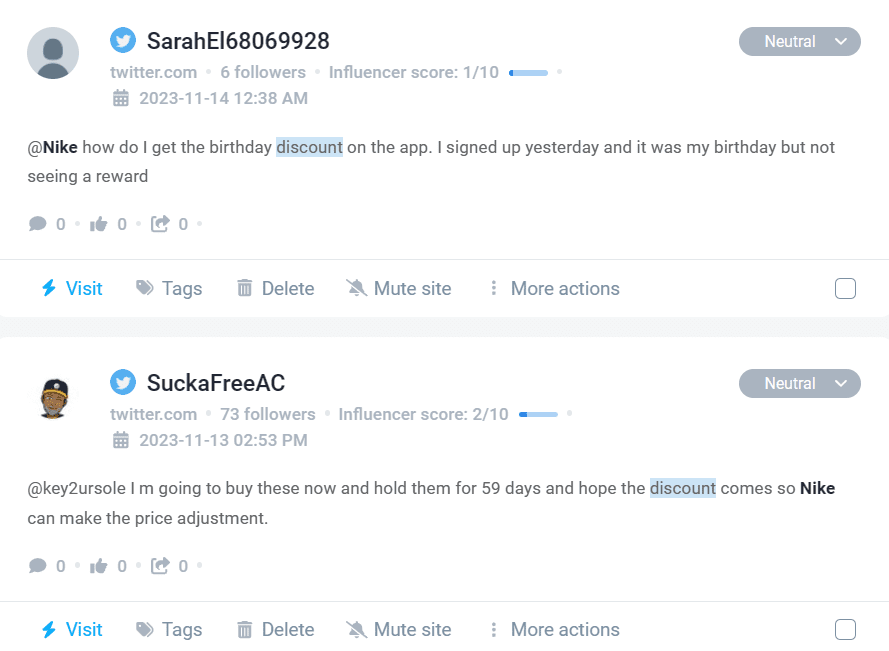
05 Conducting market research
Buyer personas can also be used to conduct market research and better understand your target audience. With data on your ideal customer, you make informed decisions about how to market and sell to them.
Create focus groups for your segmented marketing and understand what your ideal customer prefers with Brand24.
Different types of buyer personas
There’s not one default buyer persona template. Depending on your needs, you can create different personas to fully understand how your messaging should look like.
Below are 5 examples of buyer personas you can use.
01 Demographic personas
These personas are based on demographic factors such as age, gender, income, education, and location. If you are selling products or services that are particularly relevant to a specific demographic group, you might want to research this type of buyer persona.
Example: Smartphone manufacturers can research demographic information to decide how to market specific models to their target audience.
02 Psychographic personas
These personas are based on personality traits, values, attitudes, interests, and lifestyles. This type of persona can be useful for brands that sell products strongly associated with a particular lifestyle or belief system.
Example: Gaming products and brands target a specific niche that expects particular performance and design.
03 Behavioral personas
A behavioral buyer persona is based on the buying behavior and decision-making processes, such as how customers research products, what factors influence their purchasing decisions, and what type of customer service they expect. Use this template if you want to optimize the sales processes and customer service.
Example: Any products for specialists should have behavioral personas in mind as they usually put more effort into product research.
04 Industry personas
The industry persona template is mainly used by B2B businesses operating within a specific industry. These personas are based on the specific needs, pain points, and challenges of the customers from the particular industry sector.
Example: Industrial companies that sell machines such as CNC routers or 3D printers. They need to adapt the products to specific clients’ needs.
05 Service personas
Similarly to industry personas, service personas also use specific needs, pain points, and challenges, but they refer to the company’s services. Service providers (for example, SaaS companies) use this type of persona. It can help them improve their workflow and customer journey.
Example: SaaS marketing tools need to adjust their products accordingly to the workflow of the service personas.
Try Brand24 media monitoring and create marketing messages informed with your company’s ideal customer data.
How many buyer personas should you have?
It’s always good to have multiple buyer personas, but at the same time, remember that less is more. If you create too many personas, you can get lost in the plethora of examples. Every additional customer persona adds more detail to your research, but it deludes the central core of your ideal customer.
Try starting with 2-4 different personas to depict ideal customers with distinctive backgrounds.
There’s no ideal number of how many buyer personas you should have. It depends on whether you make a specific product with narrow capabilities or offer a broad spectrum of services.
What’s more important is the quality of each buyer persona. The less you have, the easier it is to research them. Rather than creating as many personas as possible, you should aim to develop accurate, detailed, and actionable personas. This means conducting thorough research and using accurate data to inform the development of each persona and regularly updating and refining them over time to ensure they remain relevant.
How to create a buyer persona in 5 easy steps
The target audience research phase can take some time, but at the end of the day, it’s a productive process that will give you a lot of valuable insights about your customers. Here are 5 steps to creating a strong buyer persona for your brand.
01 Conduct research
The first step in creating a buyer persona is to conduct research to gather information about your target audience. This involves analyzing data on your existing customers, conducting surveys or interviews, and researching online forums and social media groups related to your industry or product.
Many tools can help you conduct the research, and Brand24 is one of them. I’ll tell you how to use it in the next chapter.
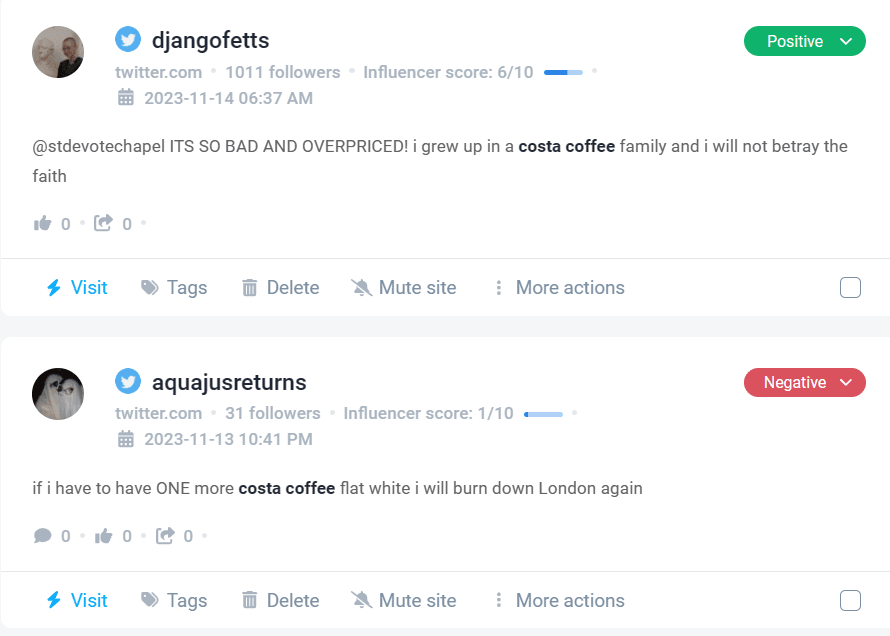
Use Brand24 to conduct consumer research. Click the button to get a 14-day free trial.
02 Identify key characteristics of the ideal buyer
Once you have gathered the data, you can use it to identify the key characteristics of your ideal customer persona. Look for specific demographic information, such as age and gender, and psychographic information, such as values, attitudes, and interests.
03 Develop a profile
Using the information you gathered, develop a detailed buyer persona profile that includes their background, job title, challenges, goals, and preferred communication channels. This will help you better understand their needs and motivations and get acquainted with potential customers.
04 Name your persona
Your buyer persona must have a name. It humanizes the profile and makes it easier to refer to. You can add a prefix descriptor so it’s easier to remember. For example, “Analytic Ian” for a person looking for social media analytic tools for his organization.
05 Use your buyer persona in the marketing strategy
Now, there’s nothing left but to implement the target personas in your business strategy. It means your marketing personas will now determine the messaging and tone of voice. They will help you better resonate with your ideal customer persona, create content that is more likely to engage and resonate with them and choose the right communication channels.
How to use Brand24 for buyer personas research?
Brand24 is a media monitoring and social listening tool.
After you set up the project, our tool will gather all publicly available online mentions about your brand, selected keywords, or competitors. This means you can gather real customer data and discover your prospective customers’ language. At the same time, you can perform a competitor analysis.
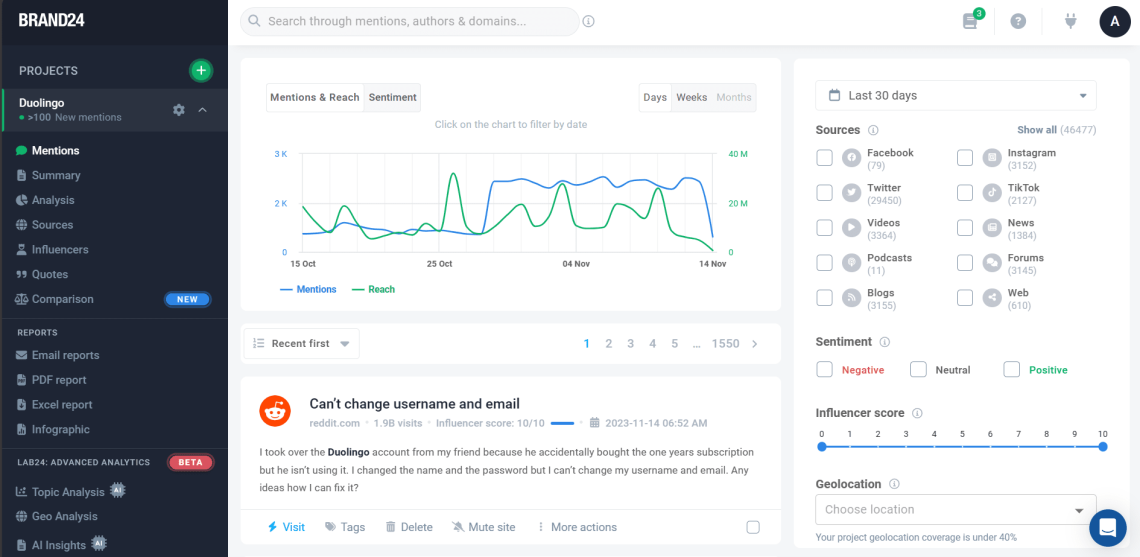
We offer a 14-day free trial with no card required. Use Brand24 to analyze your customers.
You can use Brand24 to monitor your brand mentions and use the data to analyze what people are interested in your services or products. Use the data to evaluate your marketing communication and sales team efforts. Do you use the right language? Do you communicate via the right channels? Does the product resonate positively with the audience?
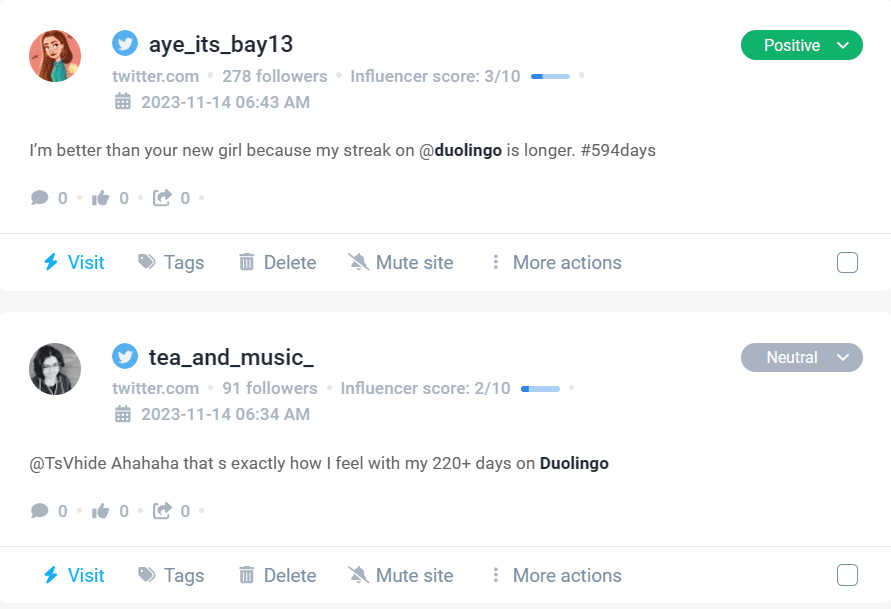
You can even use the tool to find the most influential people on social media and schedule a call with them to gather real customer feedback. When a particular person’s contribution to creating a buyer persona helps you greatly, you can also ask them to collaborate through influencer marketing.
How many interviews should you arrange? Start with a few and interview different people to get a wide range of responses. Remember to prepare buyer persona questions before the call.
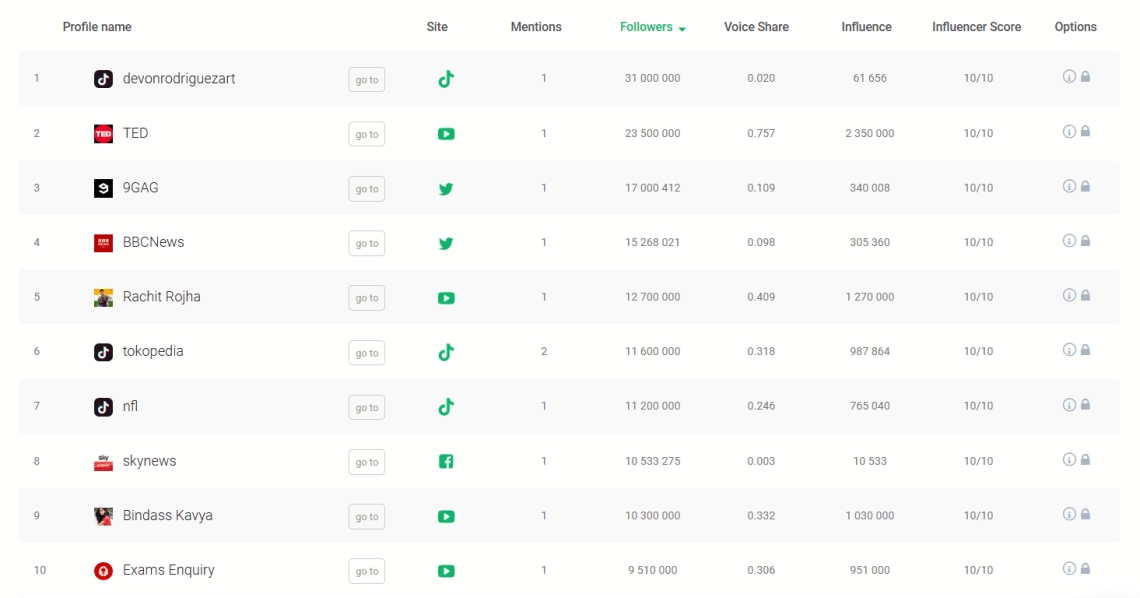
On the other hand, you can also search for product-related keyword mentions and discover how people communicate within the niche and what they look for. Then, use the analytics data to create ads that will directly address the problems and offer solutions.
Brand24 is an awesome tool for researching current customers’ moods and what they really think about your brand (sentiment analysis). Once you collect the feedback, it will be easy for you to base the buyer personas on real customers.
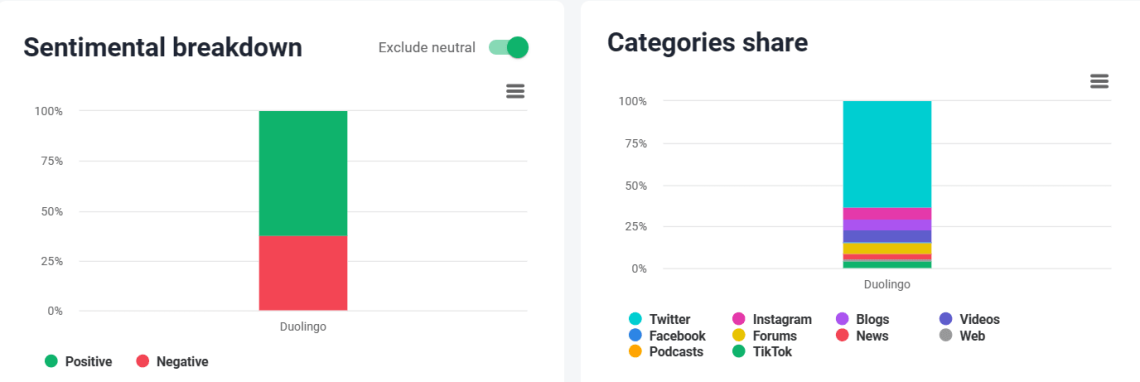
Plus, Brand24 has a bunch of AI-powered features that will further inform your marketing efforts. Take a look at the below parameters to further inform your buyer persona story:
- Topic Analysis
- AI Insights
- Emoji Analysis
- Emotion Analysis
- Metrics Analysis
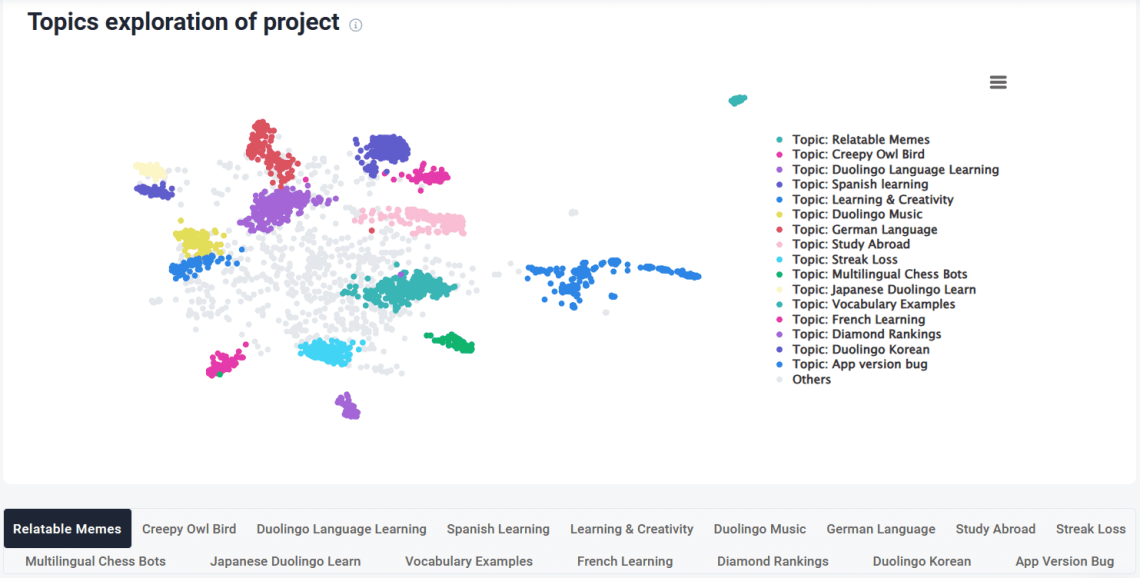
Give it a go! The first 14 days are on us, and we don’t want your credit card details.
Creating a buyer persona – templates & tools
As already mentioned before, Brand24 is a very efficient tool for your buyer persona research. It provides valuable insights into your audience by collecting mentions and metrics from across various online sources.
However, there are some more tools that can support your audience persona creation. I’ll share with you the top 4.
Hubspot
That’s a super useful free tool for visualization of your buyer personas.
After inserting all data like age, job, education, job responsibilities, etc. you will see your persona in an orderly template. It’s an excellent way of displaying your personas’ data and presenting them to your marketing team.
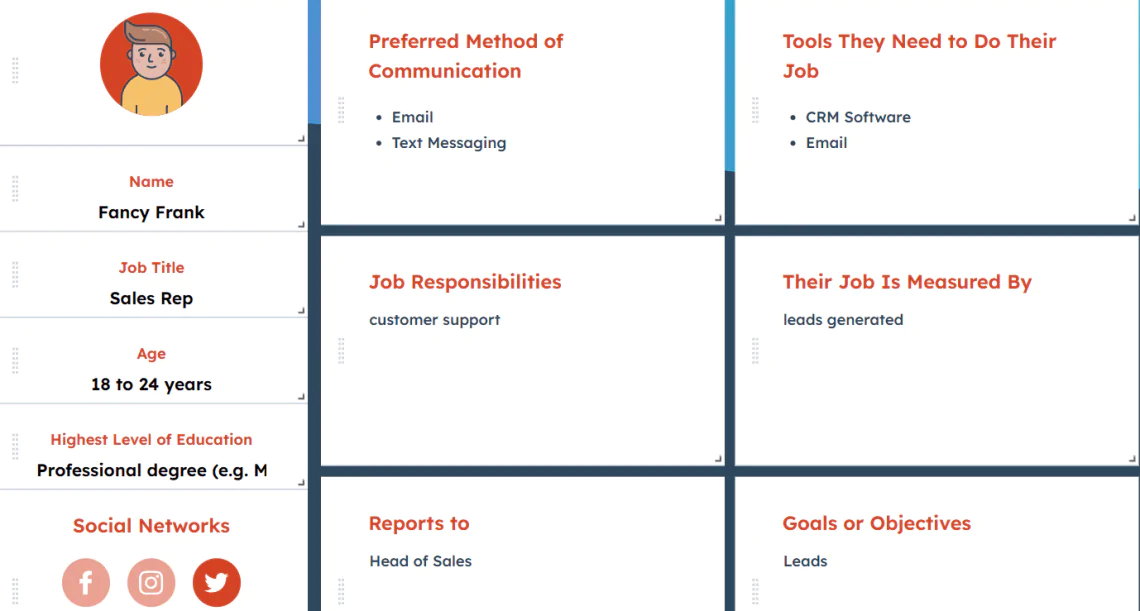
There’s only one minus about this tool. It doesn’t help you collect the needed data.
Hubspot gives you a nice persona template, but you still need to collect the data somehow.
That’s where Brand24 comes in! Use our media monitoring tool to collect your customer persona data.
Semrush
Semrush is a complex tool that covers all areas of the buyer persona creation process. Similarly to Hubspot, it provides multiple persona template options with full customization.
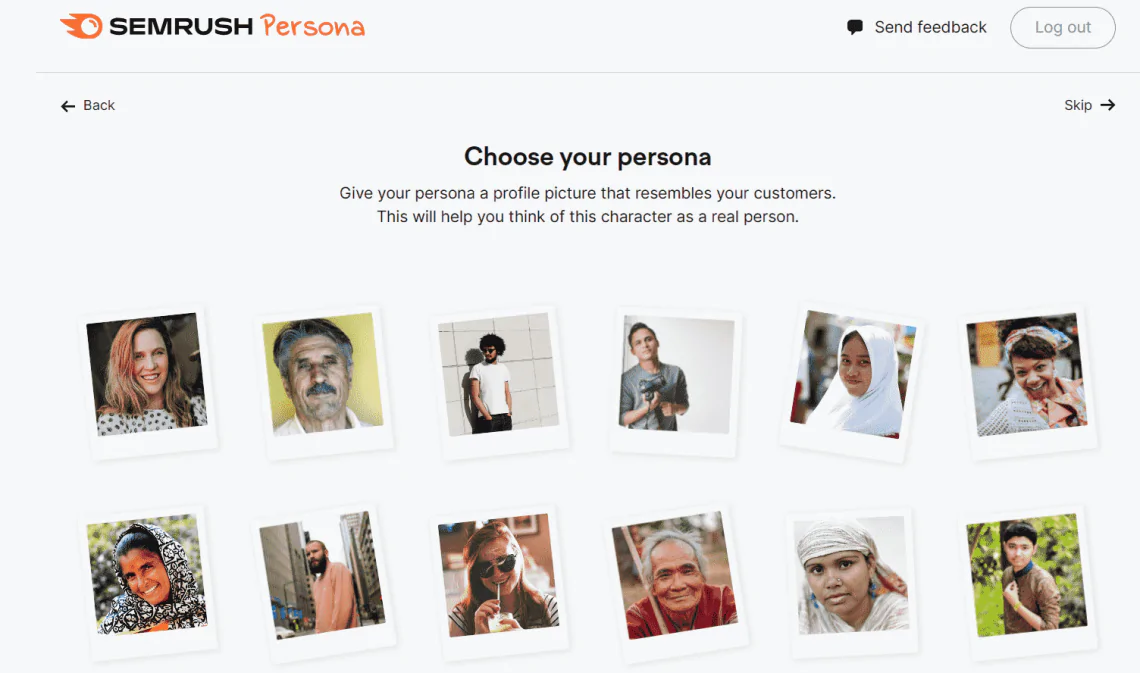
You can choose a corresponding image and fill in the buyer personas important data.
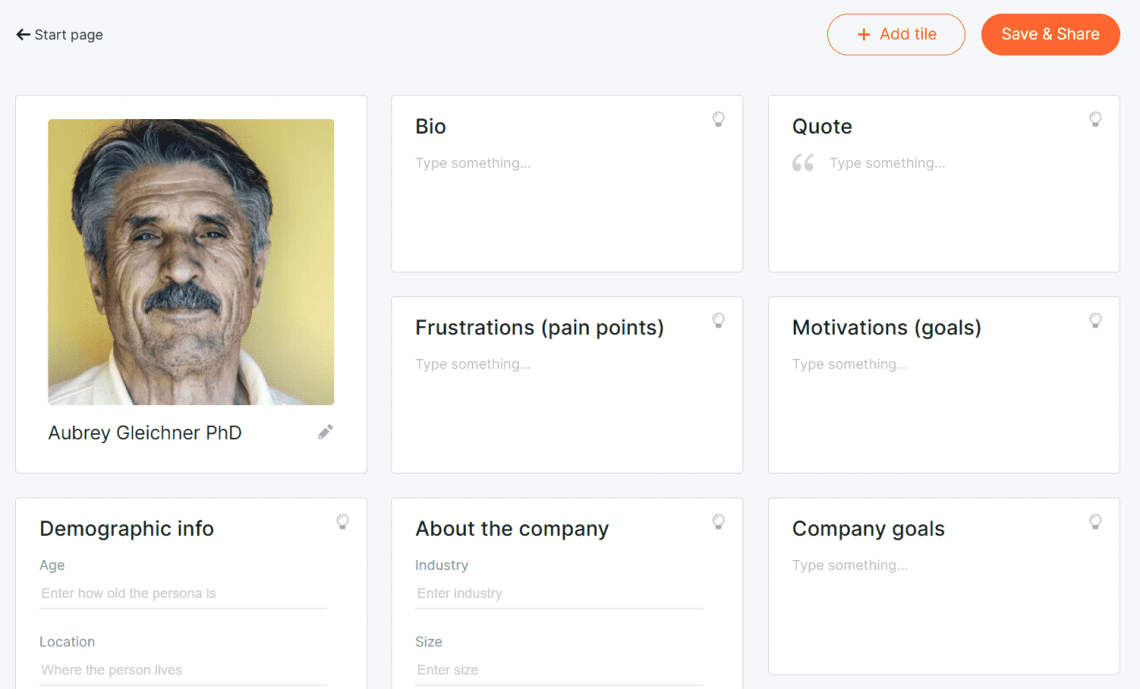
Besides the templates, Semrush supports your personalized marketing efforts with data and metrics. The One2Target Semrush feature covers the areas of:
- Demographic information
- Socioeconomics
- Interests
- Social Preferences
Uxpressia
Uxpressia is another free buyer persona template tool. You can choose from multiple kinds of buyer persona template types, like B2B persona template, empathy map, or persona best practices template.

What I like about Uxpressia is that it offers multiple other features for your marketing campaigns and a better understanding of your focus groups.
The tool also supports you with creating journey maps and impact maps.
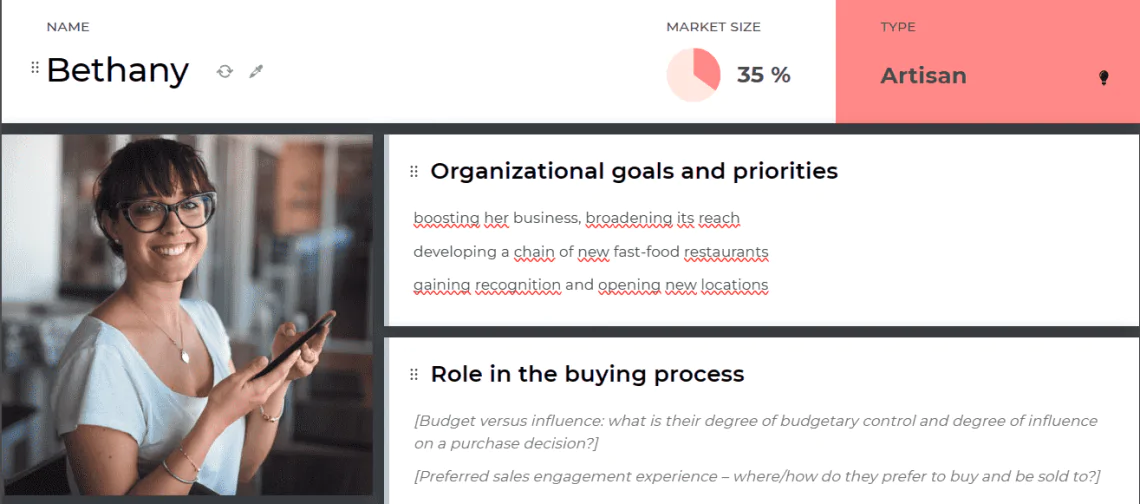
The forms are fully customizable, giving you full flexibility and facilitating the creating of your own buyer persona templates.
Miro
Miro is a tool where the marketing team can collaborate on different buyer personas. It offers a common space and buyer persona templates to streamline work and help you keep your customer data in order.
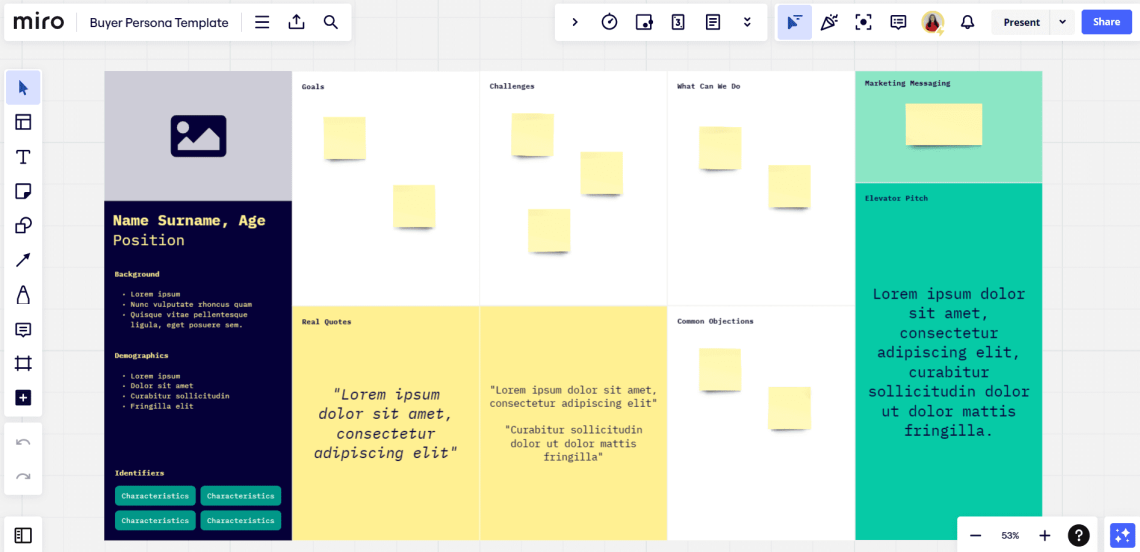
It’s great software, especially for teams who already use Miro and know its functioning.
Try Brand24 to find answers to your buyer persona questions and streamline decision-making process.
B2B vs B2C buyer personas
In B2C marketing, the target audience comprises individuals or households, where purchase decisions are influenced by personal buying power and necessitate less contemplation. The marketing approach for B2C products or services is often broad and caters to a diverse customer base.
However, B2B marketing involves a more intricate strategy. B2B buyer personas encompass multiple individuals with diverse roles, interests, concerns, and goals, thereby elongating the customer journey. Unlike B2C, decision-makers in B2B scenarios may not be the ultimate end-users of the product or service.
Distinctions between B2B and B2C buyer personas extend to the target market, demographics, goals, and challenges. B2C buyer personas focus on individual needs and goals, while B2B buyer personas revolve around the objectives and challenges of the business entity.
Buyer persona FAQ
What are the 4 types of buyer personas?
Different marketing and business strategists may classify buyer personas in various ways based on their methodologies. However, one common classification breaks down buyer personas into four categories based on their decision-making patterns.
- Economic Buyers: Primarily concerned with financial outcomes, like ROI and total cost.
- Technical Buyers: Gatekeepers assessing the technical compatibility and features.
- User Buyers: End-users focused on ease of use and day-to-day functionality.
- Coach or Champion Buyers: Influencers without direct purchasing power but advocate for the product within the organization.
How do you identify a buyer persona in 7 steps?
- Start with existing data. Analyze your current customer base. Look at sales records, customer feedback examples, and any other data you have.
- Interviews and surveys:
- Current customers. Find out why they chose your product/service, what problems it solves for them, and how they use it.
- Prospective customers. Understand their needs, challenges, and why they might consider your product or service.
- Sales and support teams. They interact directly with customers and can offer insights into common questions, objections, and customer profiles.
- Online and market research:
- Monitor social media and online forums related to your industry. What are people saying about your brand and your competitors?
- Conduct market research to understand larger industry trends and the needs of different segments.
- Segmentation. Break down your target audience based on shared characteristics. This can be demographic (age, gender, job title), behavioral (shopping habits, brand interactions), psychographic (values, interests), or their relationship to your product (new prospect, loyal customer).
- Draft the buyer persona profiles. For each identified persona:
- Give them a name (for easy reference).
- List demographics.
- Note job title and major responsibilities.
- Identify their main challenges and goals.
- Outline their typical buying journey.
- Mention any objections they might have.
- Include preferred channels of communication.
- Refine over time: As you gather more data and insights, periodically review and refine your personas to ensure they remain accurate and relevant.
- Use and share with your team. Make sure your marketing, sales, product development, and customer service teams understand and utilize these personas. It will help them tailor their strategies and interactions accordingly.
Collect and analyze customer feedback with Brand24.
What is a good buyer persona?
A good buyer persona is:
- Accurate: Based on real data about your target customers.
- Comprehensive: Covers all aspects of your target customers, including demographics, psychographics, needs, wants, pain points, and buying behavior.
- Actionable: Provides insights that you can use to inform your business decisions.
User persona vs buyer persona
In crafting a buyer persona, we delve into a semi-fictional embodiment of the ideal customer, while the user persona focuses on representing those actively engaging with your products. It’s essential to recognize that a buyer might also assume the role of a user, although this isn’t universally applicable.
The development of both personas is a meticulous process, drawing insights from thorough market research and tangible data gleaned from your existing customer base. Typically presented in a templated format, these documents span 1-2 pages, providing a comprehensive overview of the avatar’s motivations, aspirations, requirements, preferences, and concerns.
Which departments can use buyer persona examples?
- Marketing: The marketing team utilizes a persona template to tailor messaging and design campaigns that resonate with specific audience segments.
- Sales: Directly engaging with customers, the sales team contributes insights into customer needs, pain points, and motivations, optimizing their approach based on buyer persona research.
- Customer Service: The customer service team, through direct customer interaction, gains insights into the persona’s motivations, customer behavior, communication preferences, and feedback, allowing them to align their service strategies with example buyer.
- Product Development: Marketing persona insights aid the product development team in understanding the features and benefits sought by customers, guiding the creation of products and services that align with customer persona expectations.
- Management: Senior management plays a crucial role in providing strategic direction, ensuring that every customer persona aligns with the company’s overarching goals and objectives. This alignment ensures a cohesive and effective implementation of marketing strategies across various departments.
Are there any persona generators that can do the work for you?
Yes, persona generators are tools that create a buyer persona for your brand or product based on your input data. Some of them are Hubspot, Semrush, Uxpressia, and Miro. These tools offer a free buyer persona template to order and group your buyer persona data.
Scroll up to the tool section to learn more about each software.
What are negative personas?
A negative buyer persona represents the antithesis of your ideal customer persona. It represents individuals you aim to avoid investing time and resources.
This counterpart is crucial for businesses to identify, focusing on traits like a high churn rate, low probability of repurchase, engagement with content without actual product purchase, and clients deemed “difficult,” demanding considerable time and effort but contributing minimal revenue.
Crafting a negative buyer persona enables businesses to strategically plan and align their marketing efforts with clients who align better with their goals and profitability.
Related articles


